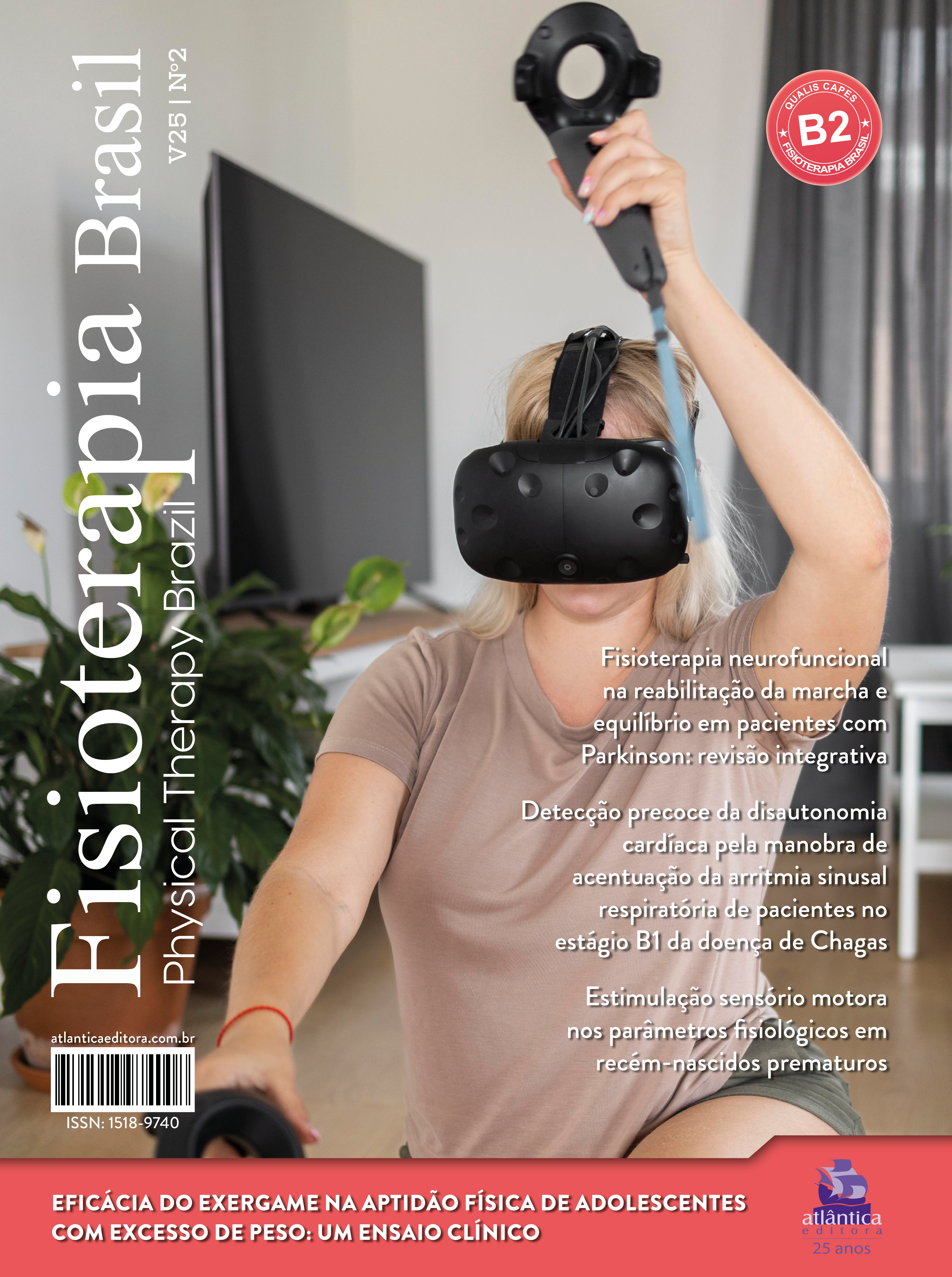Early detection of cardiac autonomic dysfunction using the respiratory sinus arrhythmia accentuation maneuver in patients with stage B1 of Chagas Disease
DOI:
https://doi.org/10.62827/fb.v25i2.s757Keywords:
respiration; heart rate; chagas cardiomyopathy; autonomic nervous system diseases.Abstract
Introduction: The maneuver to accentuate respiratory sinus arrhythmia (RSA) demonstrates to be a convenient instrument to evaluate the autonomic modulation of individuals with chronic Chagas disease cardiomyopathy (CCC), even with medication influence, as T-cruzi causes an inflammatory process creating lesions in the cardiac nerve endings of patients affected by Chagas disease. Objective: To evaluate the autonomic modulation of heart rate (HR) at rest and during the respiratory sinus arrhythmia accentuation maneuver (RSA-M) in patients with CCC in stage B1. Methods: thirty-six individuals were evaluated, divided into the CCC group, composed of 18 patients with Chagas heart disease, and the control group, formed by 18 healthy individuals. Heart rate variability (HRV) was collected beat by beat using the electrocardiography system Wincardio USB, supine for 10 minutes, and during the RSA-M for 6 minutes. Results: We observed higher values of statistical significance in Control group for mean HR (p = 0.005), IRR (p = 0.007), and worse autonomic adjustments related to SD2 / SD1 (p = 0.001) concerning CCC group in a supine position. However, evaluating the RSA-M, we observed a statistical difference in the delta I-E (p = 0,039) and the E / I rate (p = 0.045) of the Control group in relation to the CCC group. Conclusion: Patients with CCC showed better cardiovascular condition and HR control compared to the group of healthy individuals at rest. However, when subjected to RSA-M, the results showed a reduction in vagal balance in the autonomic control of individuals with CCC.
References
Nunes MCP, Beaton A, Acquatella H, Bern C, Bolger AF, Echeverría LE, et al. Chagas Cardiomyopathy: An Update of Current Clinical Knowledge and Management: A Scientific Statement From the American Heart Association. Circulation. 2018;138(12):e169-e209
Merejo Peña CM, Reis MS, Pereira BB, Nascimento EMD, Pedrosa RC. Dysautonomy in different death risk groups (Rassi score) in patients with Chagas heart disease. Pacing Clin Electrophysiol. 2018;41(3):238-45
Fenley A, LC S, HV R, LM S, A B-S, MS R. Cardiorespiratory adjustments during the accentuation of respiratory sinus arrhythmia: influence from time of maneuver on minute volume, fraction of expired CO 2, and heart rate variability. 2016;23:[68-73 pp.]
Rassi A, Marin-Neto JA. Chagas disease. Lancet. 2010;375(9723):1388-402
Adamson PB, Smith AL, Abraham WT, Kleckner KJ, Stadler RW, Shih A, et al. Continuous autonomic assessment in patients with symptomatic heart failure: prognostic value of heart rate variability measured by an implanted cardiac resynchronization device. Circulation. 2004;110(16):2389-94
Tulppo M, Huikuri HV. Origin and significance of heart rate variability. J Am Coll Cardiol. 2004;43(12):2278-80
Vanderlei LC, Pastre CM, Hoshi RA, Carvalho TD, Godoy MF. Basic notions of heart rate variability and its clinical applicability. Rev Bras Cir Cardiovasc. 2009;24(2):205-17
Catai AM, Pastre CM, Godoy MF, Silva ED, Takahashi ACM, Vanderlei LCM. Heart rate variability: are you using it properly? Standardisation checklist of procedures. Braz J Phys Ther. 2020;24(2):91-102
Reis MS, Arena R, Deus AP, Simões RP, Catai AM, Borghi-Silva A. Deep breathing heart rate variability is associated with respiratory muscle weakness in patients with chronic obstructive pulmonary disease. Clinics (Sao Paulo). 2010;65(4):369-75
Mendes Fde S, Sousa AS, Souza FC, Pinto VL, Silva PS, Saraiva RM, et al. Effect of physical exercise training in patients with Chagas heart disease: study protocol for a randomized controlled trial (PEACH study). Trials. 2016;17(1):433
Kiviniemi AM, Hautala AJ, Kinnunen H, Tulppo MP. Endurance training guided individually by daily heart rate variability measurements. Eur J Appl Physiol. 2007;101(6):743-51
[I Brazilian guidelines on diagnosis and treatment of metabolic syndrome]. Arq Bras Cardiol. 2005;84 Suppl 1:1-28
Heart rate variability. Standards of measurement, physiological interpretation, and clinical use. Task Force of the European Society of Cardiology and the North American Society of Pacing and Electrophysiology. Eur Heart J. 1996;17(3):354-81
La Rovere MT, Pinna GD, Maestri R, Mortara A, Capomolla S, Febo O, et al. Short-term heart rate variability strongly predicts sudden cardiac death in chronic heart failure patients. Circulation. 2003;107(4):565-70
Junqueira LF. A summary perspective on the clinical-functional significance of cardiac autonomic dysfunction in Chagas' disease. Rev Soc Bras Med Trop. 2006;39 Suppl 3:64-9
Nascimento BR, Lima MMO, Nunes MDP, de Alencar MCN, Costa HS, Pinto MM, et al. Effects of Exercise Training on Heart Rate Variability in Chagas Heart Disease. Arquivos Brasileiros De Cardiologia. 2014;103(3):201-7
Fukuta H, Hayano J, Ishihara S, Sakata S, Mukai S, Ohte N, et al. Prognostic value of heart rate variability in patients with end-stage renal disease on chronic haemodialysis. Nephrol Dial Transplant. 2003;18(2):318-25
Koomans HA, Blankestijn PJ, Joles JA. Sympathetic hyperactivity in chronic renal failure: a wake-up call. J Am Soc Nephrol. 2004;15(3):524-37
Published
Issue
Section
License
Copyright (c) 2024 Diogo Van Bavel, Jade Bahia Travassos, Carla Regina Farias André, Carla Caroline Ferreira da Silva, Eliete Ferreira Pinto, Roberto Coury Pedrosa, Michel Silva Reis (Autor)

This work is licensed under a Creative Commons Attribution 4.0 International License.
Autores que publicam nesta revista concordam com os seguintes termos:
Autores mantém os direitos autorais e concedem à revista o direito de primeira publicação, com o trabalho simultaneamente licenciado sob a Licença Creative Commons Attribution 4.0 que permite o compartilhamento do trabalho com reconhecimento da autoria e publicação inicial nesta revista.
Autores têm autorização para distribuição não-exclusiva da versão do trabalho publicada nesta revista (ex.: publicar em repositório institucional ou como capítulo de livro), com reconhecimento de autoria e publicação inicial nesta revista.


